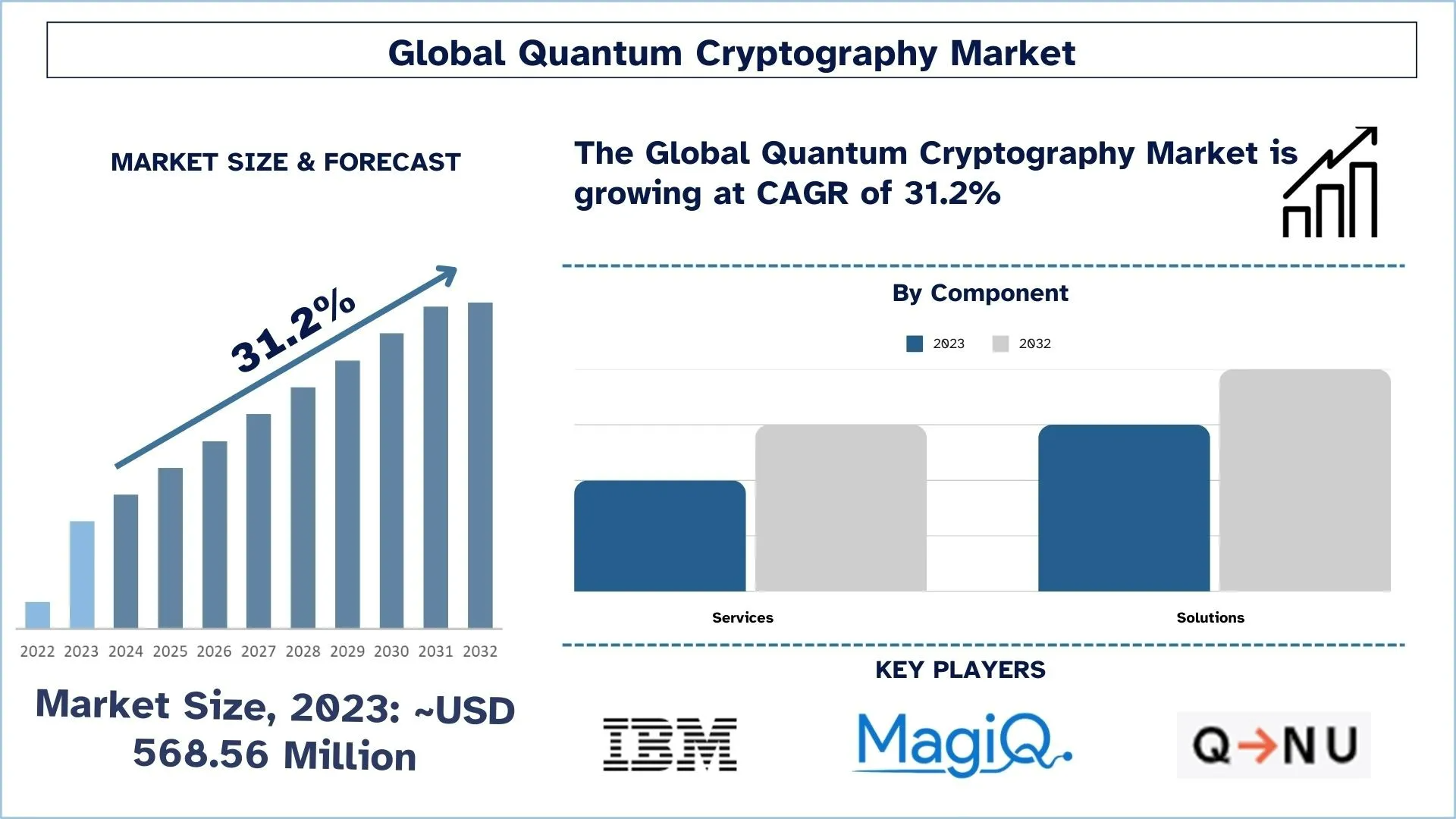Quantum Cryptography Market Report, Segments, Share, Trends & Forecast 2032

The Global Quantum Cryptography Market was valued at USD 568.56 Million in 2023 and is expected to grow at a strong CAGR of around 31.2% during the forecast period (2024-2032) owing to the rise of cloud computing and connected devices that require stronger encryption solutions.
Quantum cryptography under the leadership of the National Institute of Standards and Technology (NIST) has experienced rapid growth in the U.S. since the organization started its work on post-quantum cryptography (PQC) standards. The security measures protect vital information by defending against encryption vulnerability that may stem from the development of future quantum computers.
NIST's Post-Quantum Cryptography Standardization Project
NIST started the Post-Quantum Cryptography Standardization initiative in 2016 to acquire quantum-resistant cryptography algorithms along with their assessment and standardization. The rigorous assessment phase at NIST resulted in their August 13th, 2024, release of the first completed PQC standards. The standardization project works as a major security safeguard to protect present-day communication systems in the future when quantum computers reach the necessary scale.
Key PQC Standards
· The initial post-quantum cryptography standards released by NIST include three specifications under the Federal Information Processing Standards category. The standard was built to manage two critical functions which include encryption operations alongside digital signature capabilities. The finalized standards include:
· The FIPS 203 named ML-KEM (Module-Lattice-Based Key-Encapsulation Mechanism) implements CRYSTALS-Kyber algorithms as its general encryption standard because of their brief encryption keys and fast performance.
· The CRYSTALS-Dilithium algorithm serves as the foundation for FIPS 204 which was rebranded to ML-DSA (Module-Lattice-Based Digital Signature Algorithm) for digital signature protection tasks.
· Part of the FIPS 205 standard is the Sphincs+ encryption method which serves as the SLH-DSA (Stateless Hash-Based Digital Signature Algorithm) for digital signatures when used with the official computational method of ML-DSA.
NIST plans to publish a draft version of FIPS 206 that uses the FALCON algorithm in 2024.
Impact and Significance
These newly released standards represent a crucial milestone in modern cybersecurity because they announce that enterprises and suppliers must start making their information security systems safe from quantum computer threats. NIST promotes immediate implementation of updated standards by system administrators for securing confidential email messages and e-commerce transactions along with other electronic data.
Access sample report (including graphs, charts, and figures): https://univdatos.com/reports/quantum-cryptography-market?popup=report-enquiry
Transition and Future Steps
NIST released its first public draft report that details the procedure for implementing post-quantum cryptography standards. The document serves cybersecurity professionals and executive management who need insight about implementing transition processes. NIST needs input concerning the draft report to enhance their transition strategy.
Conclusion
The PQC algorithm standardization initiative by NIST in the United States works as a vital measure to preserve cybersecurity strength against upcoming quantum computing technology advancements. The standards and early adoption policy from NIST create a pathway toward quantum-safe technology which protects sensitive information by keeping confidentiality along with integrity and availability.
Contact Us:
UnivDatos
Contact Number - +1 978 733 0253
Email - contact@univdatos.com
Website - https://univdatos.com
- AI
- Vitamins
- Health
- Admin/office jobs
- News
- Art
- Causes
- Crafts
- Dance
- Drinks
- Film
- Fitness
- Food
- Juegos
- Gardening
- Health
- Home
- Literature
- Music
- Networking
- Other
- Party
- Religion
- Shopping
- Sports
- Theater
- Wellness


